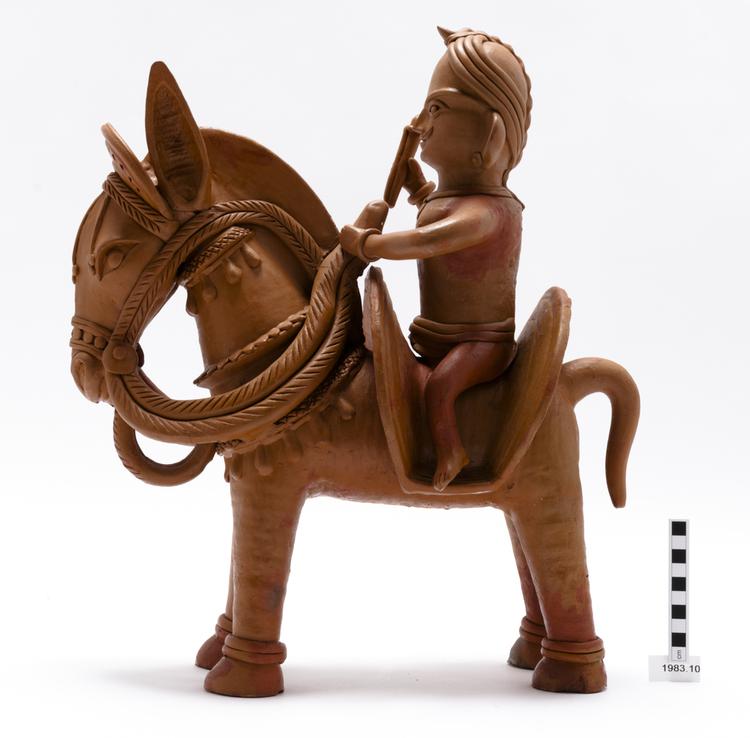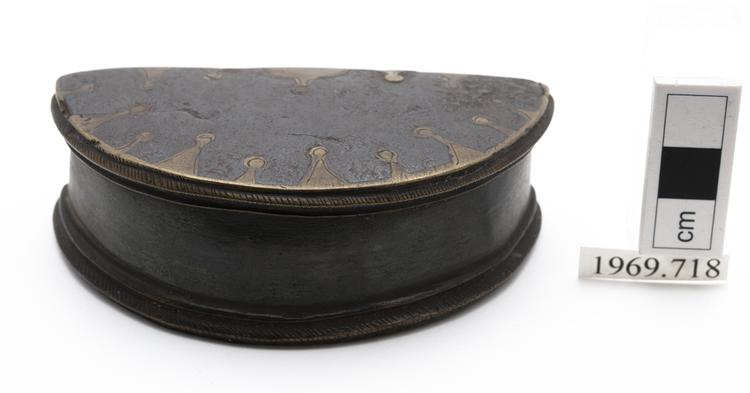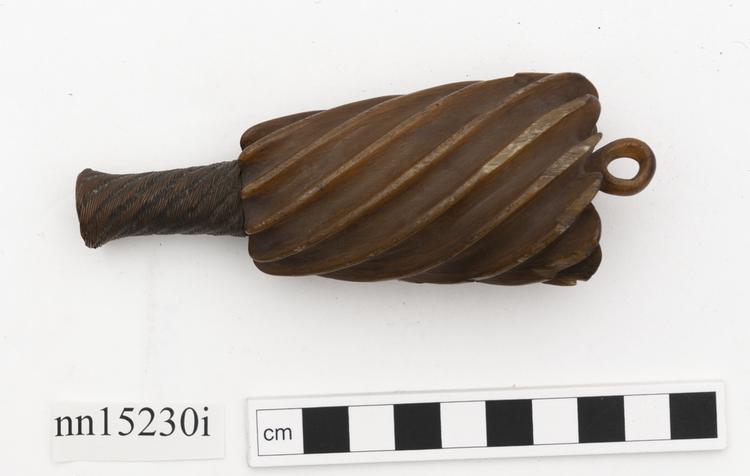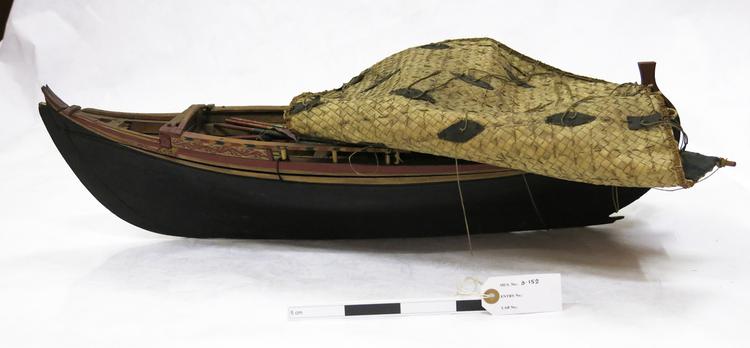
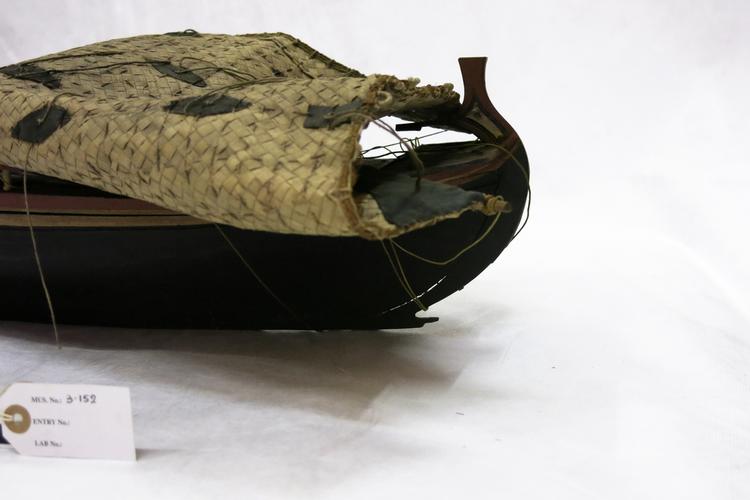
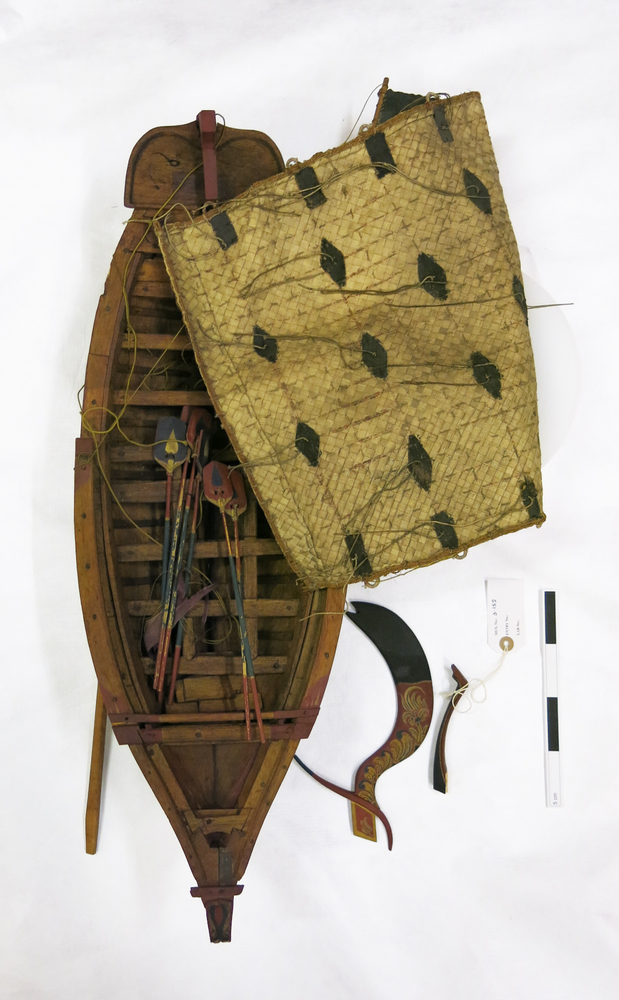

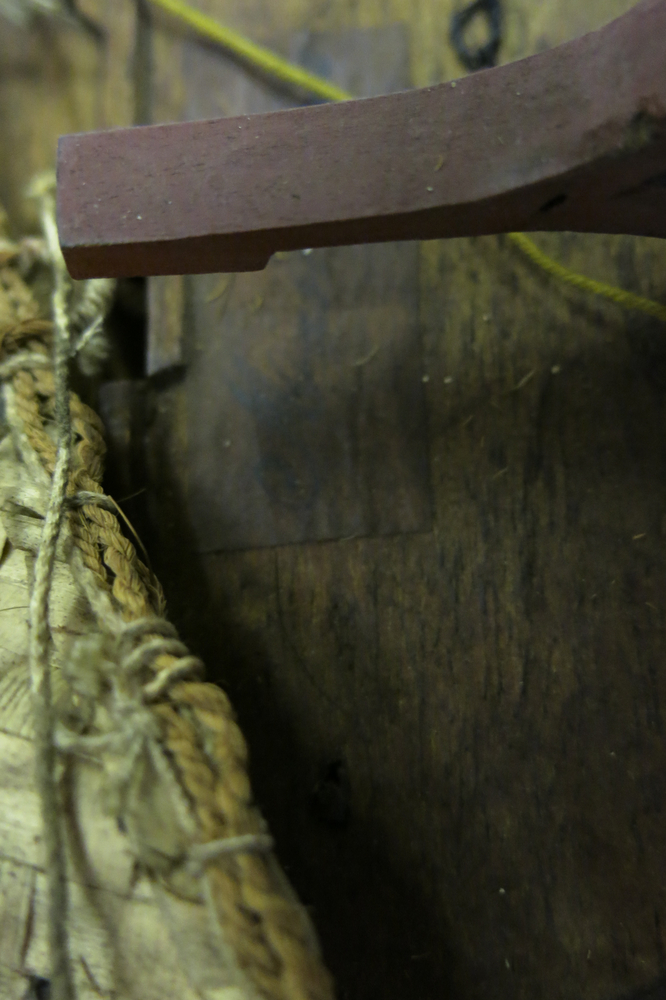

Model fishing boat, mas-odi.
PY Manguin’s comments are based on his fieldwork in the traditional shipyards of the northern atolls of the Maldives and interviews at Male in March 1988 (results partly published in P.-Y. Manguin, "Les techniques de construction navale aux Maldives originaires d’Asie du Sud-Est", Techniques & Culture, 35-36, 2000, p. 21-47). Bell (1922) has both Mas odi and Mas doni, both up to 20 ft. in length. Mas means fish in Divehi and odi and doni (or dhoni) are both used for “boat”, and appear to be partly interchangeable (possibly depending on atolls). Some claimed during interviews in 1988 that the mas doni had evolved from the mas odi long ago and was longer and narrower than the mas odi. This model appears to bear the earlier name. One other model (no. 3.234) is a mas doni; it happens to be narrower. The mas doni was certainly the most common “fishing boat” in Maldivian waters in the 1980s, at least in the Northern Atolls; they were up to 15 m in length. Mas donis then still brought in the largest share of the country’s tuna catch, using pole and line in a unique method of fishing (after first loading a section of the boat’s hull with water and live bait). Most mas donis were by then already propelled by inboard engines. The Horniman model still has a traditional square sail made of matting. It lacks the tall, removable prow, bending backwards, that is typical of later mas donis (models 3.153 and 3.154 have one, albeit smaller than those observed in the 1980s).



